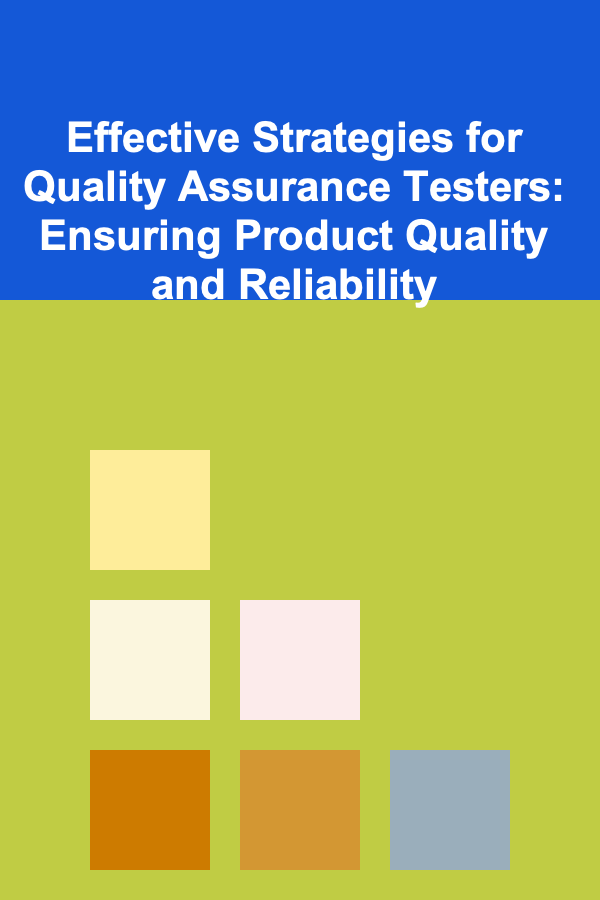10 Mistakes to Avoid When Tracking HELOC Expenses
ebook include PDF & Audio bundle (Micro Guide)
$12.99$7.99
Limited Time Offer! Order within the next:
Not available at this time
A Home Equity Line of Credit (HELOC) can be a great financial tool for homeowners who need flexible access to cash. Whether you're funding home improvements, consolidating debt, or paying for unexpected expenses, a HELOC allows you to borrow against the equity in your home. However, tracking the expenses related to your HELOC can become complicated if you're not careful.
Properly managing and tracking HELOC expenses is essential to avoid financial pitfalls, such as incurring excessive interest charges or falling behind on your repayment schedule. Failing to track HELOC expenses can result in financial confusion, unexpected costs, and potential damage to your credit score. In this article, we'll explore the 10 common mistakes homeowners make when tracking HELOC expenses and provide strategies to avoid these errors, ensuring that your borrowing experience remains smooth and financially manageable.
Not Keeping Track of Your Spending Regularly
One of the most common mistakes homeowners make when using a HELOC is neglecting to track their spending regularly. Since a HELOC functions as a revolving line of credit, it can be tempting to borrow as needed without constantly checking the balance or the impact of the withdrawals on your overall financial situation.
However, not keeping track of your spending regularly can lead to unpleasant surprises later on. Over time, you may accumulate a large amount of debt, making it difficult to pay it off. Additionally, if you're not tracking your withdrawals and balances, you may not realize how much you're paying in interest or fees.
How to Avoid This Mistake:
- Set a schedule for reviewing your HELOC activity. This could be weekly, bi-weekly, or monthly depending on how frequently you access your line of credit.
- Use financial apps or tools that allow you to link your HELOC account and receive alerts when you borrow money or when interest charges are applied.
Ignoring the Interest Rate Fluctuations
Many HELOCs come with variable interest rates, meaning the rate can fluctuate over time based on market conditions. While a lower interest rate might seem like a great deal initially, failing to monitor rate changes can leave you unprepared when the rate increases. If your HELOC interest rate rises significantly, it could increase your monthly payments and the total cost of borrowing.
How to Avoid This Mistake:
- Understand the terms of your HELOC. Make sure you know how often the interest rate is adjusted and the index it is tied to.
- Track changes in the interest rate over time and budget accordingly for potential increases.
- Consider locking in a fixed-rate option if your lender offers it and you're concerned about rising rates.
Not Understanding the Fees Involved
HELOCs can come with a variety of fees, including application fees, annual fees, transaction fees, and even early closure fees if you pay off your balance early. Many borrowers fail to track these fees, thinking that their HELOC is just about the interest rate and the principal balance. However, these fees can add up quickly and significantly increase the overall cost of the credit.
How to Avoid This Mistake:
- Review your HELOC agreement carefully to understand all fees involved.
- Track any fees that are charged to your account, and compare them with the terms in your agreement.
- Consider different lenders when shopping for a HELOC, and opt for one that offers the most favorable fee structure for your needs.
Failing to Budget for Repayments
Since a HELOC is a revolving line of credit, it's easy to fall into the trap of only paying interest or making minimum payments. This can lead to significant debt over time, as you're not actively reducing the principal balance. Some homeowners may assume that they'll pay off the debt later, but without proper budgeting, this approach can lead to a mounting balance and increased interest charges.
How to Avoid This Mistake:
- Create a repayment plan that includes paying down the principal in addition to covering the interest.
- Use a HELOC payment calculator to determine how much you should pay monthly to pay off the loan within a reasonable timeframe.
- Set aside a specific amount for repayment each month in your budget and avoid using your HELOC for non-essential expenses.
Not Monitoring the Draw Period and Repayment Period
Most HELOCs have two distinct periods: the draw period, where you can borrow money, and the repayment period, where you must start repaying the principal and interest. Some borrowers fail to realize that the draw period is limited, and when it ends, they must begin repaying the balance.
If you aren't monitoring when your draw period ends, you may be caught off guard when your monthly payments increase significantly at the start of the repayment period.
How to Avoid This Mistake:
- Know your draw period and repayment period from the beginning.
- Plan ahead for the transition from the draw period to the repayment period by adjusting your budget to account for the increased payments.
- Consider paying down a portion of the balance during the draw period to reduce the impact of the repayment period.
Using the HELOC for Non-Essential Purchases
A HELOC offers the convenience of borrowing against your home equity, but it can be tempting to use the funds for non-essential expenses, such as vacations, luxury items, or other discretionary purchases. This can lead to accumulating debt that may be difficult to pay off, especially if the funds are not being used for investments that will increase the value of your property or improve your financial situation.
How to Avoid This Mistake:
- Use your HELOC responsibly and only for important financial needs, such as home improvements, education, or consolidating higher-interest debt.
- Evaluate your reasons for borrowing to ensure that the expense aligns with your long-term financial goals.
Not Having a Contingency Plan for Emergencies
While a HELOC can be an excellent emergency fund in times of need, failing to have a backup plan in case you face unforeseen financial difficulties can lead to major issues. If you're relying heavily on your HELOC and suddenly face a job loss, medical emergency, or other financial strain, you may find yourself struggling to repay the debt.
How to Avoid This Mistake:
- Have an emergency savings fund separate from your HELOC to cover unexpected expenses.
- Use the HELOC as a last resort for emergencies, rather than relying on it as a primary source of funds.
- Ensure that you can afford the repayments if your income decreases or other financial challenges arise.
Overlooking the Impact on Your Credit Score
Using your HELOC excessively or failing to make timely payments can negatively impact your credit score. Since a HELOC is a form of revolving credit, the balance you owe relative to your credit limit can affect your credit utilization ratio, which is a major factor in your credit score. Additionally, missed or late payments can result in penalties and damage your credit history.
How to Avoid This Mistake:
- Pay your bills on time to avoid late fees and negative impacts on your credit score.
- Keep your credit utilization ratio low by not maxing out your HELOC and by paying down the balance regularly.
- Regularly monitor your credit score to ensure that your HELOC use is not negatively impacting your credit.
Not Understanding the Tax Implications
In some cases, the interest you pay on a HELOC may be tax-deductible if the funds are used for qualified expenses, such as home improvements. However, many borrowers don't fully understand the tax implications of using a HELOC, and they may miss out on potential tax deductions.
How to Avoid This Mistake:
- Consult a tax professional to understand whether your HELOC interest is tax-deductible and how to properly report it.
- Keep careful records of how you use your HELOC funds so you can claim deductions if applicable.
- Be aware of any changes in tax laws that might affect your ability to deduct HELOC interest in the future.
Failing to Reassess Your HELOC Periodically
A HELOC is not a static financial product. Over time, your financial situation and goals may change, and it is essential to reassess your HELOC periodically. If your interest rate increases, your financial needs change, or you're struggling with repayment, it may be time to consider refinancing your HELOC or even paying it off earlier than planned.
How to Avoid This Mistake:
- Review your HELOC annually to assess whether it still fits your financial needs.
- Consider refinancing your HELOC if you can get a better interest rate or terms.
- Evaluate whether you need to borrow from the HELOC in the first place and consider paying off the balance if possible.
Conclusion
Tracking your HELOC expenses carefully is crucial to managing your debt and protecting your financial health. By avoiding the common mistakes outlined in this article, you can make more informed decisions about how to use your HELOC, avoid unnecessary fees and interest charges, and ensure that you're on track to repay the debt in a way that aligns with your financial goals.
Remember that a HELOC is a powerful financial tool, but it requires careful management and tracking to ensure that you don't fall into debt traps. With the right approach, you can use your HELOC responsibly and maintain a solid financial foundation for the future.

Building a Profitable Passive Income Stream Using Deep Learning
Read More
Effective Strategies for Quality Assurance Testers: Ensuring Product Quality and Reliability
Read More
How to Conduct Consumer Behavior Research to Inform Your Market Analysis
Read More
How to Create a Fun and Engaging Themed Photo Booth for Your Party
Read More
How to Make Your Home Party More Inclusive for All Guests
Read More
How To Use Infographics for Data Visualization
Read MoreOther Products

Building a Profitable Passive Income Stream Using Deep Learning
Read More
Effective Strategies for Quality Assurance Testers: Ensuring Product Quality and Reliability
Read More
How to Conduct Consumer Behavior Research to Inform Your Market Analysis
Read More
How to Create a Fun and Engaging Themed Photo Booth for Your Party
Read More
How to Make Your Home Party More Inclusive for All Guests
Read More